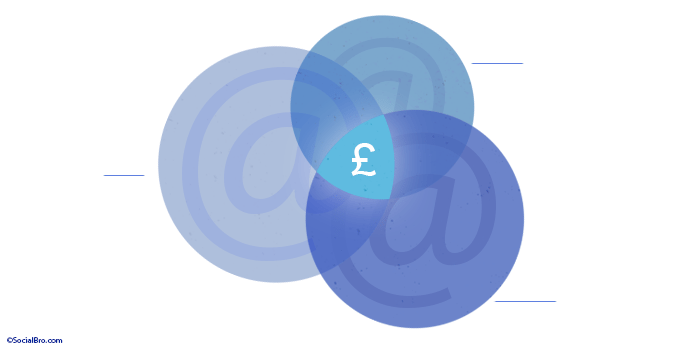7 ways to drive revenue with smarter Twitter segmentation & targeting

Research by Marketsandmarkets has shown that CMOs are set to increase spending on social media analytics by 440% from 2014 to 2019, gathering an unprecedented amount of data. Meanwhile, a Gartner survey has shown that the most successful digital marketers spend six times more on tools and people to help understand their data than those who don’t. This growing level of spending is indicative of the importance that senior marketers are placing on social media data and Twitter data, and other forms of audience analysis. If you’re not gaining the insights available, chances are your competitors will be...
Undoubtedly, any investment comes with ROI expectations. An easy way to quickly demonstrate value is to take advantage of the advanced segmentation tools within your platform. Here’s how marketing departments can use smart Twitter segmentation to gain invaluable insights and drive revenue with more targeted Twitter marketing campaigns ( both paid and organic of course)
1. Build unique target audience profiles
Before you you do any segmentations for campaigns, take the time to use your segmentation tools to further build on your target audience profiles so you can identify the most valuable segments.
Discover what they are talking about, what interests they have, what devices they are using etc. You can do this both for your audience as a whole, and also for specific subsegments and locations. Once this is done, all of the insights you have obtained can be feed into other areas of your marketing strategy.
2. Uncover the most influential people in any audience
Influencers are 90% more likely to get other people selecting your brand. Segmentation tools are can be used to group Twitter users by influence, giving you the chance to study what gives them such impact, as well as approach them for joint opportunities.
Recently, DigitasLBi have been using influencers as a core part of an ongoing campaign with PUMA, using SocialBro’s segmentation tools to do so. They’ve highlighted the importance of discovering these users and integrating them within your campaign.
- "We felt that actually getting those real life runners in our target markets speaking for us would be a more authentic way to deliver our message than simply putting out promotional material. So we wanted to straight into the heart of the existing running communities in the cities that we’re targeting. There’s only so much that a brand can say about themselves, but your message can achieve a far greater impact if it’s delivered by people with some real credibility in their field."
Leslie Fines, Social & Content Strategy Manager, DigitasLBi
3. Match emails with their Twitter handles
Most businesses collect email addresses along with other essential contact details in their CRM. Although, not many brands are aware they can actually match customers’ email addresses with their Twitter handles.
There are lots of reasons why this is a smart move. Most importantly, you can use Twitter insights to further segment your email database. Better targeting equals better results! For example, you can cross-check how many of your customers are following you on Twitter for validation on how your strategy is working. Alternatively, if you’re a retail brand you could identify all contacts who haven’t opened an email from you in six months and look to re-engage them with a paid Twitter strategy after 6 months. The options are endless.
4. Target people by personality insights
By discovering what type of personality traits an individual user or a group of users have, you can plan your campaign accordingly. You’ll be able to build Tailored Audience lists according to what you want them to do and what actions you want to drive from your campaigns. Find out more about how you can target based on personality insights here.
5.Target the audiences of other relevant profiles
Depending on your marketing strategy in may be worth looking at the followings of other key profiles and businesses. You could for example segment and identify followers of your competitors’ who show similar traits to your own followers.
Or you could segment and target the most recent followers of your competitors in key cities. It’s worth running continuous segmentation and targeting tests that fit in with your wider marketing strategy.
6. Unearth the profiles who engaged with your campaign
What’s the point encouraging people to join in a campaign hashtag if you’re just going to dump them like yesterday’s jam once the campaign is over? Segment users who are not yet following you but have used the hashtag for your campaign and/or retweeted key Tweets related to it. These people have expressed an interest in the message of your campaign, suggesting that they may be open to a more direct branded message in future. Use a Tailored Audience list to deliver promoted content to them.
7. Sweep up event attendees
If you have an event, such as a series of in-store parties, or event big experiential brand events, that features an event hashtag then you can segment the Twitter users who have interacted with it and conduct follow-up campaigns. You can also assess those profiles to see if your event was connecting with the type of audience you aimed to attract. Furthermore, if you were collecting emails then these can also be used with an email integration tool as mentioned above.
Segmentation of your audience isn’t just there to give you some interesting stats. Used correctly, it can provide you with a springboard to launch high ROI campaigns with the exact target audience you desire. It can also provide you with detailed feedback on the type of people engaging with your brand. Have you been using segmentation in your marketing strategy?





